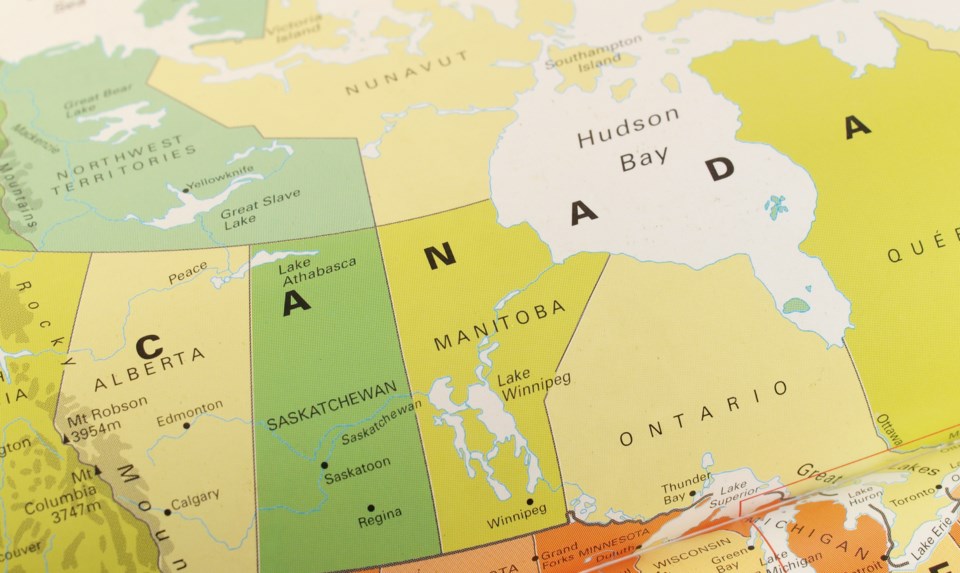Alberta Premier Jason Kenney’s call for his Canadian counterparts to lower interprovincial trade barriers and improve labour mobility will likely face its strongest challenge in B.C.
That is the assessment of analysts familiar with Canada’s internal trade issues, which foreign investors and companies have long identified as a key detriment to investing in the Canadian market.
Being perceived as a divided, siloed collection of provincial economies is especially troubling for Canada in an increasingly competitive global environment, because the country’s market is only 17th in the 2018 International Monetary Fund rankings.
A further subdivision in that market severely limits Canada’s competitiveness as a destination for international investment, said Carlo Dade, director of the trade and investment centre at the Canada West Foundation.
“These restrictions cost money because they make us less efficient,” Dade said. “And that loss of efficiency costs jobs. For a foreign company looking at us and wondering why it is so difficult to do business in Canada, they have choices. If a company goes down to the United States and builds a plant in Montana, they don’t have these types of problems trying to sell things to Texas or California… We have a smaller market to begin with; it’s a tougher proposition, and raising the costs makes it even harder for us.”
At a July 10 Council of the Federation meeting in Saskatoon, Kenney said Alberta will drop many of the province’s exemptions to the Canada Free Trade Agreement, including in key areas of government procurement.
Kenney also said Alberta will look into the possibility of recognizing the credentials of lawyers, teachers and other regulated professionals from outside the province. He added that internal barriers to trade and labour accounted for between $50 billion and $130 billion in costs annually.
Jim Brander, an economics professor at the University of British Columbia’s Sauder School of Business, said that while it is true that interprovincial barriers negatively impact trade and the economy, the scale of that impact may be exaggerated. He added that barriers come from the fundamental nature of Canada and its provinces, and in many cases there are good reasons for provincial exceptions.
“I think it’d be a mistake if – in the spirit of compromise across the country – we somehow ended up cutting back on [B.C.’s environmental] regulations.”
Brander added that he isn’t convinced that a lack of improved interprovincial trade would damage the Canadian domestic market, given that the country’s economic structure already receives limited benefits from international investment.
“Yes, it’s not ideal – our economy would be more efficient without these barriers – but it’s not like something terrible is going to happen.”
In either case, Brander and Dade agree that B.C. will likely be the western Canadian market least likely to be receptive to Kenney’s free-trade overtures. B.C. – currently the only western province with a New Democratic Party (NDP) government – isn’t ideologically aligned with Alberta and Saskatchewan, and the intense debate around the Trans Mountain pipeline expansion is only one manifestation of that rift.
Even political affinity might not overcome the fundamental differences behind each province’s electoral base.
Case in point: the 2012 friction between then premiers Christy Clark and Alison Redford over the scuttled Enbridge Inc. (TSX:ENB) Northern Gateway pipelines project. It arose just a few years after the creation of the New West Partnership economic integration agreement between B.C., Alberta and Saskatchewan, created at a time when all three provinces were led by right-leaning parties with significant majorities.
“Out of all the provinces, I think B.C. will be the most difficult,” Dade said, noting that many of the exceptions Kenney is removing were instituted by Alberta’s previous NDP government under Rachel Notley. “For an NDP government, I could see this being very difficult … but there are trade unions in Saskatchewan and Manitoba that will push back, as well. The hope is that, because Kenney started things, it makes it easier [for other provinces] to say, ‘Look, we already have reciprocity from Alberta, so let’s go.’ And if another premier bites the bullet, then you have a potential knock-on effect.
“Now, the downside is this: if Jason Kenney fails, then you might as well put a nail in the whole issue of lowering barriers to internal trade. Because the object lesson will be, if you try this with political forces, the unions will shoot you down … and you may have to wait a couple of generations before another politician tries to take the risk.”
As such, Dade said Kenney should be commended for making the free-trade and labour mobility announcement, given that it is a topic that can struggle to gain support – even among Western Canada’s conservative voters who may not see the long-term gains of an integrated economy over the short-term losses to local job markets in certain sectors.
But Brander noted that, even if Kenney’s announcement was high-profile, it doesn’t mean the needle will move on removing interprovincial barriers.
Similar arguments have been made in the past with limited success because of the lack of a united list of priorities across provinces and a legal framework to limit each provincial government’s ability to change direction on a dime.



